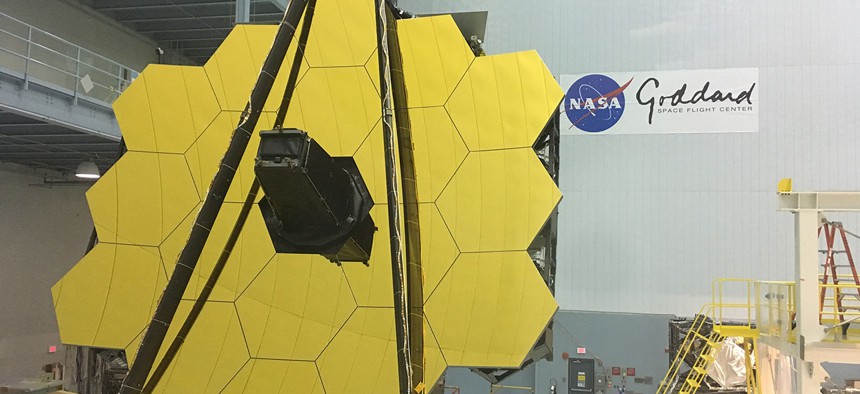“Would you agree to pay the 800 above cap cost?” Smith asked Bush.
“We think that would be the wrong approach,” Bush replied.
Smith appeared exasperated. “I think that that would be justified, given the poor record and given the poor management,” he said. “I only wish that Northrop Grumman was going to take responsibility and show a little bit more good faith, both for the taxpayer and for the cost overruns, but it sounds like you’ve made up your mind. I just happen to disagree with you.”
When asked whether Northrop Grumman’s contract with NASA prohibits it from providing funds from its own coffers to the mission, a company spokesperson said, “I would refer you back to the responses in the hearing.”
It’s a tricky question, with little precedent. NASA has discontinued some projects because of contractor troubles in the past, but they were usually in the beginning stages, like the Radiation Budget Instrument, a large sensor that had been scheduled to launch in 2021 to study how Earth absorbs and reflects solar energy. NASA canceled the project in January, citing “significant technical issues and substantial cost growth over the past two years.”
Officials at the Government Accountability Office, an oversight agency that audits federal programs including NASA missions, criticized the contractor for the mission, the Florida-based Harris Corporation. They said Harris should be put on a proposed watch list of contractors that have exhibited poor performance and shouldn’t be allowed to compete for future NASA contracts.
At this week’s House hearing, lawmakers floated the idea of penalizing Northrop Grumman for its performance on Webb by restricting it from bidding for other projects at the space agency.
“We should be changing the policy so that this doesn’t happen like this again,” said Dana Rohrabacher, a congressman from California. “And perhaps a company that does not meet its goals or what it said it could do, perhaps we shouldn’t be giving them the next contract that comes down the line, whatever their bid is.”
For the most part, large-scale programs like space observatories have received extra cash when they have needed it. And their contractors, even those that made mistakes, made profits. In the 1980s, the contractors for the Hubble mission received millions of dollars in bonuses, even as the telescope launched over time, over budget, and with one glaring mistake: a defect in its primary mirror that blurred its field of view.
In 1990, NASA’s inspector general determined that if the space agency had “fully considered the cost overruns, the bonuses may have been reduced by as much as $1 million,” according to a Los Angeles Times story at the time. Three years later, the Justice Department threatened the company that built the flawed mirror with a lawsuit. It eventually agreed to pay the government $15 million.
If the worst happens with Webb, the federal government could threaten Northrop Grumman with the same.
But unlike Hubble, Webb was not designed to be reachable or repairable by astronauts. The space observatory will launch folded into itself and spend two weeks unfurling as it settles into its orbit around the sun. The complicated sequence, a delicate dance of hundreds of tiny maneuvers, is fully automated. The telescope can only sustain a handful of glitches in the process.
If the deployment fails, nothing can be done. Webb would become a $9.66-billion piece of space junk. And the debate of money would begin anew—this time about who should pay for the loss of the world’s most powerful space telescope.








